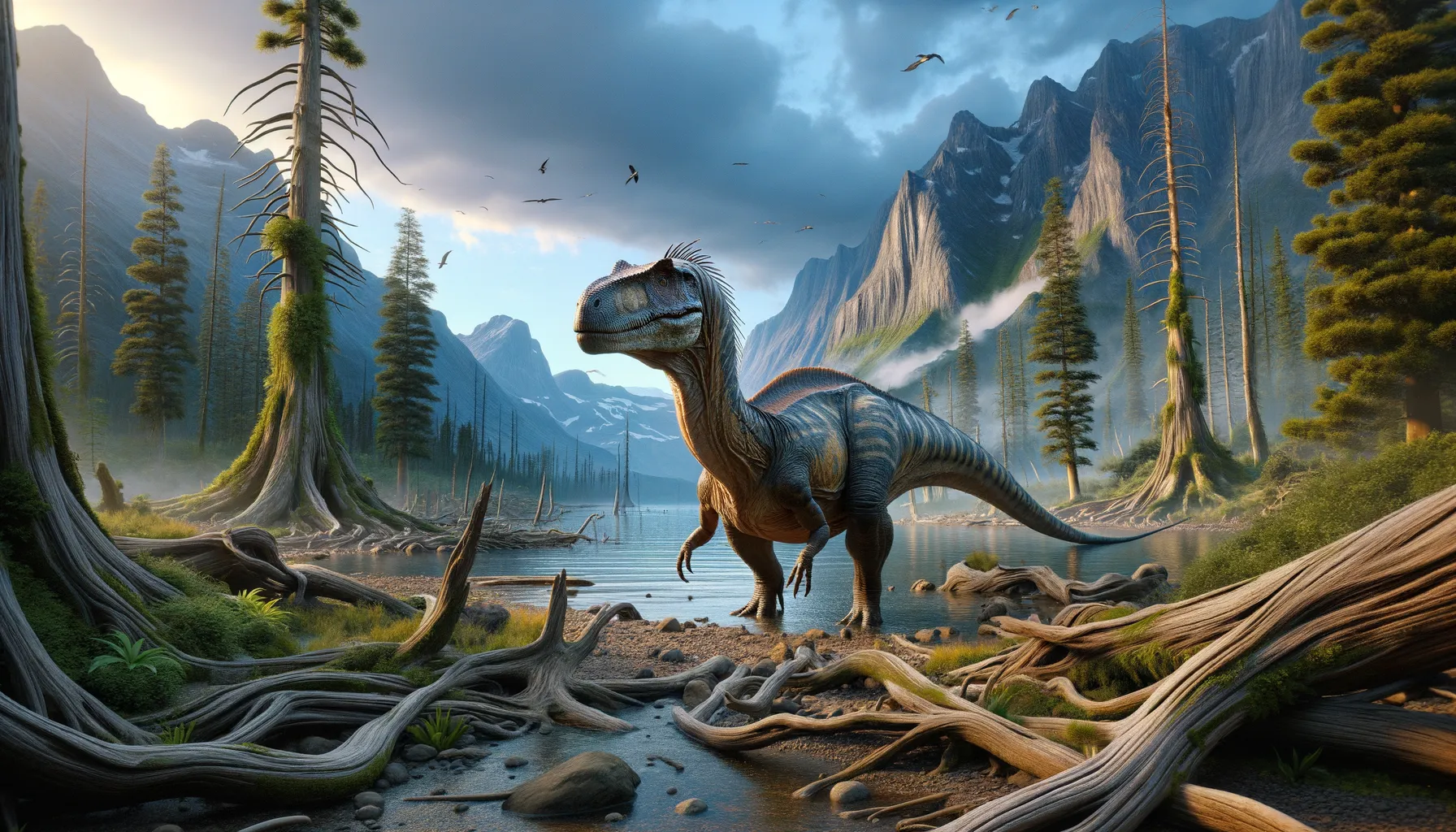
Thespesius
A gentle giant of the Cretaceous.
Period
Cretaceous
Length
About 9 meters.
Height
Approximately 3 meters.
Weight
Estimated around 3 tonnes.
Thespesius was a plant-eating dinosaur that roamed North America during the late Cretaceous period. It was part of the hadrosaur group, also known as duck-billed dinosaurs, recognized for their unique snouts and large bodies. While the fossil record for Thespesius is sparse, it is believed to have shared its habitat with a wide variety of other dinosaur species.
Diet
Thespesius was herbivorous, mainly feasting on the abundant foliage available in its habitat. It likely had a complex dental system, allowing it to efficiently process plant material. Seasonal changes would have influenced its food sources, leading to a varied diet.
Hunting
As a herbivore, Thespesius did not hunt, but instead foraged for a variety of plants. Its advanced jaw structure allowed for effective grinding and processing of foliage. It likely fed in groups, sharing resources with others of its kind.
Environmental challenges
Thespesius faced numerous challenges, including competition for food with other herbivores and avoiding predators. Seasonal or climatic changes could have impacted its food supply, necessitating adaptability in its feeding habits. Habitat changes over time also posed significant challenges, requiring movement to new areas for survival.
Speed
Moderate runner, not particularly fast.
Lifespan
Likely around 30 years.
First discovery
Found in the late 19th century in Montana.
Fun Facts
- Thespesius was a dinosaur that lived during the Late Cretaceous period around 70 million years ago.
- The name 'Thespesius' means 'wondrous', reflecting the awe this dinosaur inspired when first discovered.
- Thespesius is believed to have been a type of hadrosaurid, commonly known as a 'duck-billed dinosaur'.
- This dinosaur was likely a herbivore, primarily feeding on plants and vegetation available at the time.
- Thespesius remains have been discovered primarily in North America, highlighting its presence in that region during the Late Cretaceous.
- While Thespesius itself is not well-represented in the fossil record, it helped pave the way for understanding related hadrosaurids.
- Thespesius is one of the lesser-known dinosaurs, making it a continuing mystery for paleontologists to solve.
Growth and Development
Thespesius likely underwent significant changes as it matured, increasing in size from a small hatchling to a massive adult. Growth rates would have varied depending on food availability and environmental conditions. Parental care may have played a role in early development stages, with adults possibly protecting young individuals from predators.
Habitat
Thespesius thrived in lush, green environments with plenty of vegetation for grazing. It inhabited areas that offered both safety and ample food resources. Rivers and floodplains may have been common in its habitat, providing a rich ecosystem that supported diverse animal life.
Interaction with other species
Thespesius coexisted with various dinosaur species, likely interacting with them over shared resources and space. Predatory dinosaurs would have posed the most significant threat, especially to young or sick individuals. It's likely that Thespesius lived in herds, a behavior that could have helped deter predators.
Natural lifespan
Its lifespan could have extended up to approximately 30 years.
Reproduction
Thespesius probably laid eggs, with nests possibly found in isolated or protected areas. There may have been some level of parental care, typical of some dinosaur species, to ensure the survival of offspring. Babies would have been relatively small at birth but grew rapidly with access to abundant food resources.
Social behaviour
Living in herds or groups could have been typical for Thespesius, providing protection from predators. Social interactions may have included communication through vocalizations or visual displays. Herd dynamics might have been complex, with established hierarchies or coordinated movements during migrations or foraging.
Fossil locations
Thespesius fossils are primarily located in North America, with significant finds in Montana. The scattered remains make comprehensive study challenging, yet they indicate a widespread distribution. Ongoing discovery efforts may yield more complete specimens, offering deeper insights into its biology and ecology.
